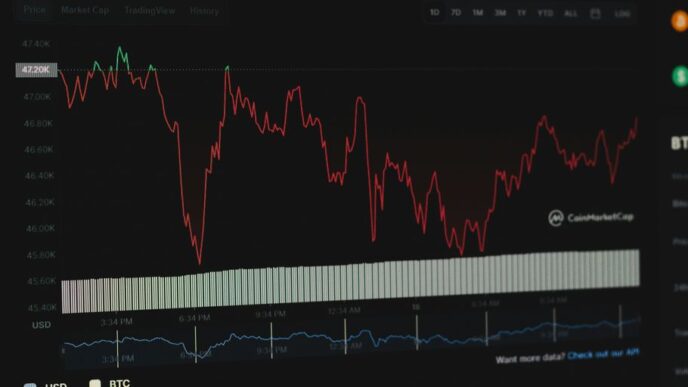AI agents are popping up everywhere these days. From your phone to your fridge, they’re the digital helpers making life a bit easier. But what exactly are they, and how do they work? As we move into 2025, understanding the different types of AI agents is more important than ever. This guide will walk you through the basics, showing you the various kinds of AI agents and how they’re used in real life. Whether you’re in healthcare, finance, or just curious about tech, there’s something here for you.
Key Takeaways
- AI agents are becoming crucial across different industries, offering unique solutions tailored to specific needs.
- Understanding the types of AI agents helps in selecting the right one for your business or personal use.
- As technology evolves, AI agents will continue to grow in capabilities, offering even more advanced features.
Understanding the Core Types of AI Agents

Simple Reflex Agents
Simple reflex agents are the most basic type of AI agents. They operate on a condition-action rule, meaning they respond directly to the present input without considering the history of previous states. Think of a basic thermostat: it detects the current temperature and turns the heating on or off based on preset rules. These agents are straightforward but limited, as they can’t adapt to new situations or learn from past experiences.
Model-Based Reflex Agents
Model-based reflex agents take things a step further by maintaining an internal state that reflects some aspects of the world around them. This internal model helps them understand how their actions affect the environment. For example, an autonomous vehicle uses a model-based approach to track objects around it, predict their future positions, and make navigation decisions. These agents are more adaptable than simple reflex agents but still have limitations in handling complex scenarios.
Goal-Based Agents
Goal-based agents are designed to achieve specific goals. They don’t just react to the environment; they evaluate their actions based on how well these actions bring them closer to their objectives. For instance, a GPS navigation system calculates various routes and selects the best path to reach a destination. These agents are capable of planning and executing sequences of actions, but they require more computational resources to evaluate different strategies.
Utility-Based Agents
Utility-based agents go beyond mere goal achievement by considering the "happiness" or "satisfaction" of reaching a goal. They use a utility function to measure the desirability of different outcomes and choose actions that maximize this utility. This approach is useful in complex decision-making environments, like financial trading systems, where multiple factors need to be balanced to achieve the best result. Utility-based agents are powerful but require sophisticated algorithms to define and calculate utility effectively.
Applications and Real-World Examples of AI Agents
AI Agents in Healthcare
AI agents are making waves in healthcare, especially in areas like diagnostics and patient care. They’re helping doctors make better decisions and speeding up treatment. For instance, AI can analyze medical images to spot diseases like cancer early on. Companies like IBM Watson are leading the charge in this area. These agents also help with managing patients by tracking health data and predicting issues before they become serious. Virtual health assistants remind patients about their meds and offer advice based on their health data.
AI Agents in Finance
In finance, AI agents are transforming how we manage money. They’re used for everything from fraud detection to investment analysis. AI systems can monitor transactions in real-time to catch suspicious activity, reducing the risk of fraud. They’re also great for analyzing market trends and helping investors make smarter decisions. Robo-advisors, which are AI-driven, provide personalized investment advice based on individual financial goals and risk tolerance.
AI Agents in Marketing
Marketing is another field where AI agents are making a big impact. They help businesses understand customer behavior and tailor their marketing strategies accordingly. AI can analyze data from social media, websites, and other sources to identify trends and preferences. This information is used to create targeted marketing campaigns that resonate with specific audiences. Chatbots powered by AI are also used to engage with customers, answer questions, and provide product recommendations.
AI Agents in Customer Service
AI agents are revolutionizing customer service by providing 24/7 support and quick responses. Chatbots are the most common AI agents in this area. They handle customer inquiries, resolve issues, and even process transactions without human intervention. This not only improves customer satisfaction but also frees up human agents to tackle more complex problems. Many companies are investing in AI to enhance their customer service operations, making interactions smoother and more efficient.
The Evolution and Future Trends of AI Agents

Advancements in Multi-Agent Systems
Alright, so let’s talk about multi-agent systems. These aren’t just your run-of-the-mill AI programs. We’re talking about AI agents working together, like a team of robots that can communicate and solve problems as a group. Imagine a bunch of drones coordinating to deliver packages or a set of AI systems managing a smart city. That’s the power of multi-agent systems. They’re getting better at sharing information and making decisions collectively, which is pretty cool. As technology advances, these systems are expected to become even more efficient and capable, potentially revolutionizing industries like logistics and urban planning.
Role of Large Language Models
Large language models, like the ones that power chatbots and virtual assistants, are becoming more sophisticated. These models are getting better at understanding context and nuance in human language, which means they can hold more natural conversations. They’re not just about answering questions anymore; they’re about engaging with users in a meaningful way. In the future, we might see these models being used in even more creative ways, like writing content or creating art. The possibilities are endless, and as these models continue to improve, they’ll play a crucial role in the development of AI agents.
AI Agent Replicas
Now, AI agent replicas are something straight out of a sci-fi movie. These are digital clones that can mimic human behavior and decision-making processes. Think about having a virtual assistant that knows you so well, it can anticipate your needs and preferences. These replicas could be used in customer service to provide personalized experiences or even in healthcare to monitor patient conditions and offer tailored advice. As the technology behind these replicas advances, we might see them becoming more prevalent in our daily lives.
Future Market Growth
The market for AI agents is booming. It’s projected to grow from $5.1 billion in 2024 to a whopping $47.1 billion by 2030. That’s a huge leap! This growth is driven by increased demand for automation and intelligent systems across various sectors. Businesses are realizing the potential of AI agents to improve efficiency, reduce costs, and offer personalized services. As more companies adopt these technologies, we can expect to see even more innovative applications emerge, further fueling market expansion.
Choosing the Right AI Agent for Your Needs
Assessing Business Objectives
Before you jump into the world of AI agents, take a moment to figure out what you really need. Start by identifying the specific tasks you want the AI to handle. Are you looking to automate simple, repetitive tasks or something more complex that requires decision-making? For example, if you’re aiming to improve customer service by automating responses to basic inquiries, a simple reflex agent might do the trick. But if you need the AI to handle more sophisticated interactions, you might want to look into model-based or goal-based agents.
- Define Tasks: Determine if the AI will handle simple or complex tasks.
- Set Clear Goals: Decide what outcomes you expect, like better efficiency or cost savings.
- Understand the Environment: Check if the AI will operate in a predictable or changing environment.
Evaluating AI Agent Capabilities
Once you know what you need, it’s time to evaluate the different types of AI agents out there. Look at the complexity of the AI agent in relation to the tasks it needs to perform. Higher complexity might give you more functionality, but it also means more resources and cost. For instance, utility-based agents are powerful but can be expensive, making them suitable for high-stakes applications like financial trading.
- Complexity: Match the agent’s complexity to your task’s needs.
- Cost: Consider development and maintenance costs.
- Scalability: Ensure the AI can handle increased workload or new tasks.
Implementation Considerations
After picking the right AI agent, you need to make sure it fits well with your existing systems and workflows. Integration is key here. For example, if you’re using an AI agent for customer service, it should seamlessly connect with your CRM to provide consistent service.
- Integration: Plan how the AI will fit into current systems.
- Performance Monitoring: Regularly check if the AI is meeting your goals.
- User Training: Ensure your team knows how to use the AI effectively.
Scalability and Flexibility
As your business grows, so should your AI capabilities. Choose an AI agent that can scale with your needs, whether that means supporting more users or processing more data. Consider whether the AI can adapt to new tasks or environments without significant changes.
- Modular Features: Can you easily add or remove functionalities?
- User Capacity: Does it support multiple users or departments?
- Data Processing: Can it handle more data as your business expands?
Choosing the right AI agent isn’t just about picking the most advanced one out there. It’s about finding the one that fits your specific needs, integrates smoothly with your systems, and can grow with your business. Take your time to assess your objectives, evaluate the options, and consider how the AI will fit into your current and future plans.
When picking the best AI agent for your needs, it’s important to think about what you really want. Different agents have different skills, so take your time to find one that fits your goals. Don’t forget to check out our website for more tips and tools to help you make the right choice!
Wrapping Up Our AI Agent Journey
So, there you have it, folks. We’ve taken a good look at the world of AI agents and what they mean for us in 2025. From helping businesses run smoother to changing how we interact with technology, these agents are becoming a big deal. They’re not just for tech geeks anymore; they’re tools that anyone can use to make life a bit easier. As we move forward, it’s not about if you’ll use AI agents, but how you’ll make them work for you. Whether you’re just curious or ready to dive in, there’s a spot for everyone in this AI-driven world. So, what are you waiting for? Let’s see how these digital helpers can change your game.














